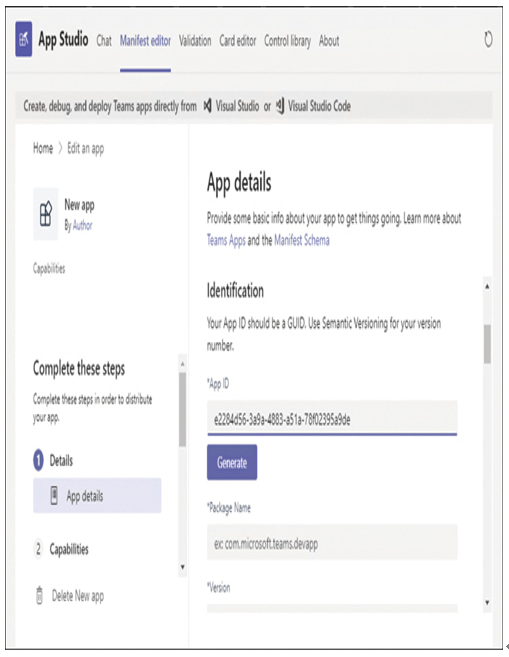Describe how Power Platform business solutions can be used by Microsoft 365 apps, including Microsoft Teams
Developers can integrate the content they create using the Power Platform tools into various Microsoft 365 applications and services, including Microsoft Teams. For example, to insert a Power Apps app into Teams, the developer must use the App ID on the app’s Details screen to identify the app to Teams. The App ID is a 128-bit globally unique identifier (GUID), notated as 32 hexadecimal digits, as shown in Figure 1-33.

FIGURE 1-33 Details screen of an app in the Power Apps portal
In Microsoft Teams, the developer must first install the Apps Studio application, then create a new Teams app. Rather than create a new app in Teams, the developer then identifies the Power Apps app to be embedded by specifying its App ID in the Identification section of the App Details screen, as shown in Figure 1-34.

FIGURE 1-34 The App Details screen in Microsoft Teams App Studio
The developer can then complete the process of configuring the new app in Teams App Studio and distribute it to users in the tenancy. The app then appears as a tile on the Add a tab screen in Teams, enabling the developer to add it as a tab on the General screen for the selected users.
Describe how Power Platform business solutions can consume Microsoft 365 services
Microsoft 365 is a suite of applications that includes Windows 10, Office 365, and Enterprise Mobility + Security. Power Apps and Power Automate are included with all of the Microsoft 365 products, but only the Microsoft 365 Enterprise E5 product includes the Pro version of Power BI. However, all the Power Platform tools are available as separate products and can be added to a Microsoft 365 deployment.
